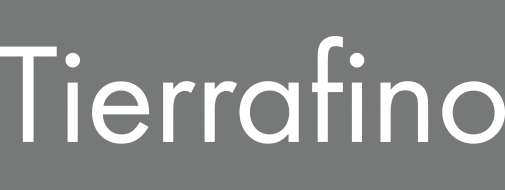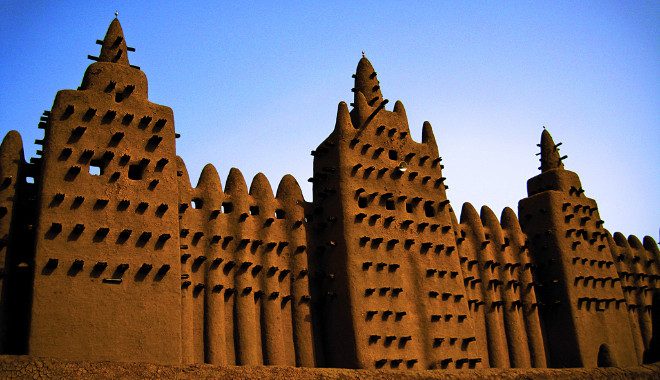Carl Giskes
The man who conjured fossil tones from earth.
After completing his training in engraving and decorative paving, Carl Giskes (1949, Krefeld) decided to go out and see the world. He left for Africa in the early 1970s and spent the next seven years exploring the continent by foot. First he walked down the eastern side, from Tunis to South Africa. A few years later he travelled along the western edge of the continent, starting in Morocco. On this journey he encountered buildings made out of clay for the first time. The most overwhelming of these were in Djenné, a city built entirely from clay and generally acknowledged as one of the wonders of the world.
Clay. A special product of nature.
“The warm feeling you have when you live in clay, in the so-called developing world, is not something you typically experience in the West,” Carl Giskes explains. He lived with local residents in the rich warmth of their clay houses. But what makes clay so special? Clay is comprised of 50% oxygen, 40% silicon and 10% minerals, trace elements and enzymes. Clay, or mud, is 30 times more breathable than brick and 100 times more breathable than concrete. The amount of silicon in clay or mud is the same as the amount of silicon in the human body. Their inner electricity is also the same. Clay absorbs 30 times more moisture than ordinary gypsum stucco.
Building with clay began in Germany in the tenth century. The castle and other half-timbered buildings of Quendlinburg are now World Heritage Sites.
https://www.youtube.com/watch?time_continue=1&v=nyWk7OQMglM&feature=emb_logo
The encounter with Joseph Beuys
When he returned from travelling around Africa and Asia in 1977, Carl Giskes began to work with the famous German artist, Joseph Beuys. The artist asked Carl to run part of his Free International University of Creativity and Interdisciplinary Research (FIU) in Castle Eifel. However, this plan didn’t materialise.
For Documenta 7 in Kassel in 1982, Beuys conceived a social sculpture. He gave his pupil Carl the responsibility of finding 7000 basalt stones from German quarries and transporting them to Kassel. These stones were then used to construct a triangular mountain on the grass in front of the Friedericianum, the main Documenta Exhibition building. Each basalt stone, weighing 450 kilos, then had to be placed beside each of the 7000 oak trees which were planted around Kassel that summer.
Carl Giskes continues to delve into building with clay
In Kassel, Carl Giskes met the clay architect Ir. Klaus Johannes Eckert, admirer and student of the Egyptian architect Hassan Fathy. He also became acquainted with Gernot Minke, the first professor of clay construction at the University of Kassel. Carl Giskes had found his inspirations and learned everything about clay and clay construction in the following years.
Carl came to Amsterdam in 1986 and until 1990 he was involved in, among other things, the creation of the Adobe Pavilion of the conference ‘Art meets Science and Spirituality in a changing Economy‘. Here were panel meetings where, for example, the American artist Robert Rauschenberg spoke with the Dalai Lama.
Founding Tierrafino
Carl Giskes decided to stay in the Netherlands and founded ‘Leembouw Nederland’ in 1992, which later got the name ‘Tierrafino’. It was the first company in the Netherlands that focused exclusively on the production and distribution of clay products and that gave the impetus to the insight that clay is a beautiful and healthy building product. In addition, Carl Giskes was the first to introduce natural earth colors for stucco and paint in Europe. With unrelenting energy, he propagates his products with lectures, demonstrations, workshops and courses. Not without success.
“A growing number of architects are realizing that choosing clay is primarily a healthy choice,” says Carl Giskes. And among those architects are not the least, for example the Swiss top architects Herzog and De Meuron. Opinions in the press are also purely positive. For example, one journalist stated that Carl “has taken the use of clay to new heights of elegance and distinguished beauty”.
Company, showroom, atelier, laboratory, demo site and classroom
Tierrafino is now located at 23 Archangelkade near the Minervahaven in Amsterdam since 2008. In the commercial and office spaces, Tierrafino shows how beneficial biological building products such as clay, straw and lime can be used to create a healthy indoor climate, with natural colours as a key advantage.
A rammed earth pavilion was built in the shed in collaboration with the Leemwerk company, which was finished with Tadelakt during various workshops.
Most Tierrafino products are manufactured in this business premises and distributed from there.
The business space is also a showroom, studio, laboratory, test set-up and classroom. New products are conceived, developed, tested and displayed here. And there are regular workshops, meetings and exhibitions of visual artists.
Tierrafino is a brand continously on the move. Carl Giskes and his employees are constantly improving existing products and developing new ones. He firmly believes in his mission: to make an essential contribution to a beautiful, healthy and environmentally friendly living environment where people really feel at home.


